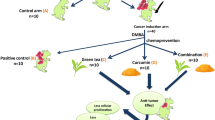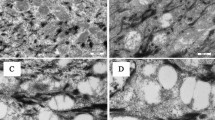Abstract
IN a recent communication1 it was shown that four different citrus oils promoted tumour development in mouse skin after pretreatment with a sub-carcinogenic dose of 9,10-dimethyl-1,2-benzanthracene (DMBA). Since man is continuously exposed to these oils in his food, it was decided to test one of them, lime oil, both for carcinogenicity and for tumour-promoting activity in the gastro-intestinal tract of mice. Another reason was the hope of demonstrating the two-stage mechanism of carcinogenesis in the alimentary canal. Previous attempts to do this have given inconclusive results2,3. In the most recent of these, Berenblum and Haran gave mice a single dose of one of four polycyclic hydrocarbons followed by 3 per cent croton oil weekly for 30 weeks. All treatments were given by stomach tube, and polyethylene glycol 400 (PEG) was the solvent throughout. The appropriate control groups were included. Numerous tumours of the fore-stomach developed in all their groups, both test and control. It was not stated whether the rest of the intestinal tract was examined. No evidence for tumour-promotion by croton oil was obtained. There are three possible reasons for this: (1) The doses of the hydrocarbons used were too high. Bock and King4 have since shown that the mouse forestomach is more sensitive than the skin to carcinogenic hydrocarbons. (2) Croton oil, in the concentration used, was carcinogenic. (3) PEG, although a suitable solvent for a single dose of a hydrocarbon5, reduces the tumour yield when given repeatedly after such a dose6 and is not, therefore, a suitable solvent for tumour-promoting substances.
This is a preview of subscription content, access via your institution
Access options
Subscribe to this journal
Receive 51 print issues and online access
$199.00 per year
only $3.90 per issue
Buy this article
- Purchase on Springer Link
- Instant access to full article PDF
Prices may be subject to local taxes which are calculated during checkout
Similar content being viewed by others
References
Roe, F. J. C., and Peirce, W. E. H., J. Nat. Cancer Inst., 24, 1389 (1960).
Beck, S., Brit. J. Exp. Path., 27, 155 (1946).
Berenblum, I., and Haran, N., Cancer Res., 15, 510 (1965).
Bock, F. G., and King, D. W., J. Nat. Cancer Inst., 23, 833 (1959).
Berenblum, I., and Haran, N., Cancer Res., 15, 504 (1955).
Roe, F. J. C., J. Cancer, 10, 61 (1956).
Roe, F. J. C., Salaman, M. H., and Cohen, J., Brit. J. Cancer, 13, 623 (1959).
Author information
Authors and Affiliations
Rights and permissions
About this article
Cite this article
PEIRCE, W. Tumour-Promotion by Lime Oil in the Mouse Forestomach. Nature 189, 497–498 (1961). https://doi.org/10.1038/189497a0
Issue Date:
DOI: https://doi.org/10.1038/189497a0
This article is cited by
Comments
By submitting a comment you agree to abide by our Terms and Community Guidelines. If you find something abusive or that does not comply with our terms or guidelines please flag it as inappropriate.



